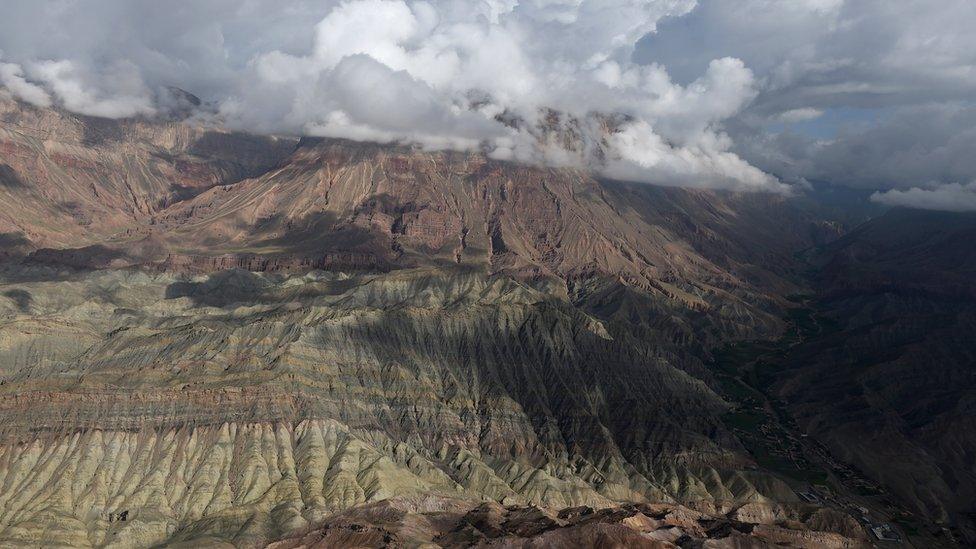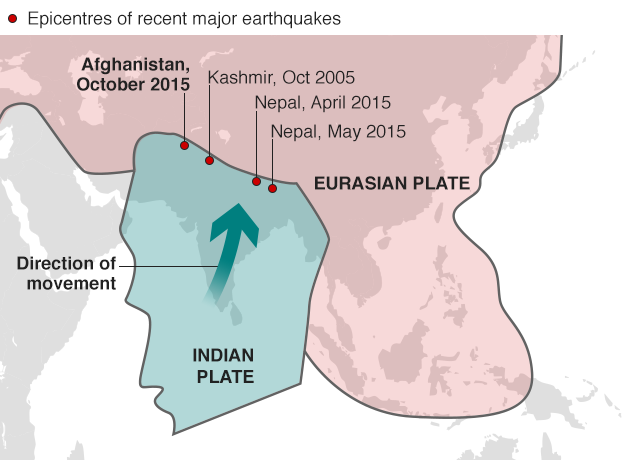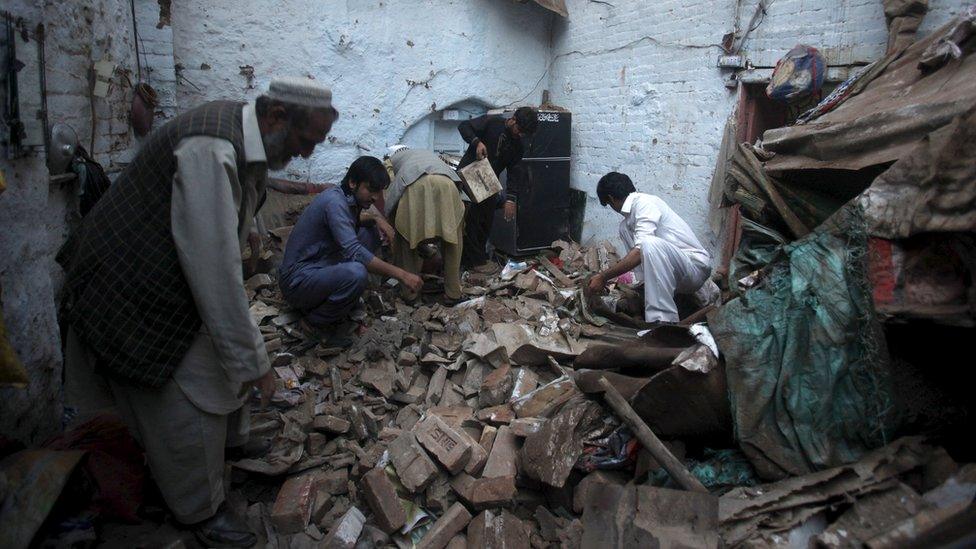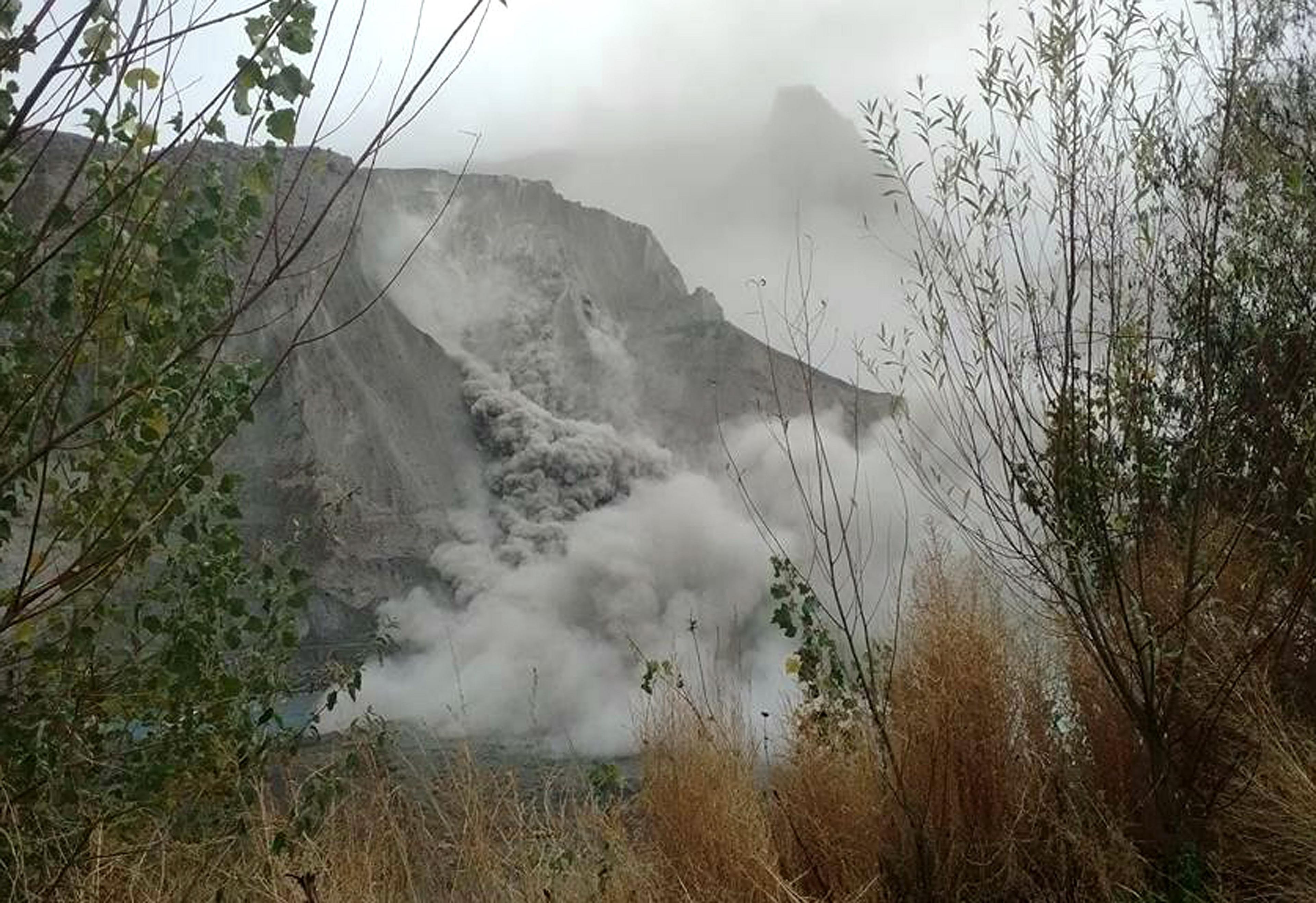Afghan quake: The corner of a continental collision
- Published

The quake was centred in northern Afghanistan, in the Hindu Kush mountain range
Very large but mercifully deep: this appears to be the view of scientists analysing the deadly earthquake in Afghanistan.
Initially measured by the US Geological Survey as magnitude 7.7, the quake is now listed by the USGS, external as magnitude 7.5.
Even this revised assessment makes Monday's event a terribly powerful tremor. Around the world, only about 20 quakes each year, on average, measure greater than magnitude 7.0.
But the origin of the shaking was more than 200km (125 miles) below the surface - much deeper than the magnitude 7.8 quake that brought widespread destruction to eastern Nepal in April. That event was only 8km deep and was followed by many aftershocks, including one in early May of magnitude 7.3.
Similarly, the devastating tremor that killed tens of thousands in Kashmir almost exactly 10 years ago was magnitude 7.6 - and just 26km deep.
The much greater depth of Monday's quake appears to have lessened the ground shaking that it produced, although its effects were felt over a wide area.
"The rupture dimensions will be very similar, but it's very far away from the Earth's surface, so there is strong shaking but it is much less severe than for a shallow earthquake," said Prof Martin Mai, an earthquake physicist from the King Abdullah University of Science and Technology in Saudi Arabia.

Monday's tremor shares an overall cause with the Nepal earthquakes in April and May: the slow collision caused by India pushing north into the Eurasian continent. But they are not directly related.
"Those Nepal earthquakes are not directly linked to this; they did not set in train a chain of events that caused this earthquake," said geoscientist Prof David Rothery, from the Open University. "It's not part of an earthquake swarm."
The Hindu Kush mountains sit on the corner of the Indian plate, rather than being at the front line of the continental collision, where the Himalayas are thrust upwards as India disappears beneath Eurasia at a rate of 40-50mm (2in) per year.
It is in this rugged region that the sideways slip between India and Afghanistan meets the head-on impact of the Himalayan fault line. There are many small, interacting faults and forces pushing in different directions.

At least 150 people were killed, and buildings, like this house in Peshawar, Pakistan, were destroyed
"It's a really intricate area," Prof Mai told BBC News. "This is where several plates have met, over several millions of years, and formed this really complex deformation pattern.
"Many fault lines have been mapped, and not all of them are active right now. But any of them could become active at any time, through such an earthquake."
Fortunately, the particular area that shook on Monday has tended to see deep earthquakes, rather than shallow ones.
"This is an area in which, predominantly, the earthquakes that occur are at a depth of 100-200km, while the event of 2005 occurred in a region [300km south-east] where we see more shallow earthquakes, historically," Prof Mai said.

The shaking caused landslides in some mountainous regions, like this one in the Hunza valley of Pakistan
Geophysicists studying this pattern of deep quakes in the Hindu Kush have suggested they might be caused, external by "boudinage": a process that takes its name from the French for sausage, because of the odd-shaped chunks of rock that result.
A narrow slab of the northward-pushing Indian continent has been forced downward by the collision and now sits almost vertically. It is being further pulled and ruptured by forces in the Earth's mantle - and those ruptures produce deep earthquakes.
"These earthquakes occurring at 200km are indicative of the processes of deformation that are occurring deep beneath the crust, as this piece of slab is being drawn down into the mantle underneath the Hindu Kush," said Simon Redfern, professor of mineral physics at the University of Cambridge.
"The earthquake today fits this pattern."
Follow Jonathan on Twitter, external
- Published26 October 2015

- Published26 October 2015
